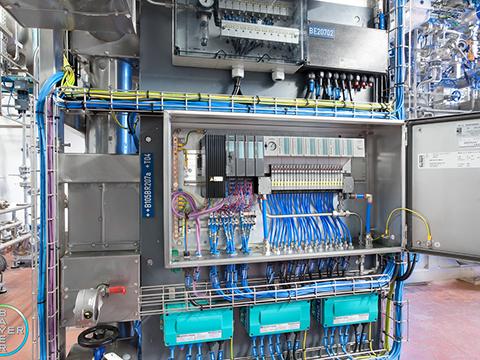
Posted to News on 12th Oct 2022, 15:16
Local process diagnostics simplify operation and maintenance

Greg Wainhouse, industry account manager for the water industry at Burkert, looks at the ways in which manufacturers of process control equipment are making life easier for the plant operators and maintenance technicians.
Process automation has delivered huge benefits for manufacturers in many industries. In everyday use, plant operators are far from being made redundant, they still need to make regular inspections of the process, among other things, looking for leaks and making sure the control valves remain in good operation condition. These activities are made easier by local diagnostics indicators, which are used on valves and local control distributions.
Process control infrastructures will predominantly use programmable logic controllers (PLCs) as the main hub for instructions, process monitoring and diagnostics. In many cases, these will be connected to human-machine interfaces (HMIs) to enable an easier way to interrogate the PLC without the need for a laptop computer.
Decentralised simplicity
However, all of this equipment is usually located away from the process itself as part of a decentralised control network. As such, it doesn’t help the plant technician as he makes regular inspections of the process to immediately see any issues with components such as the control valves. What is needed is a simple and easily assessed signal or display that highlights any issues locally.
Local, at-a-glance diagnostics can take several forms. The most obvious is the use of coloured LEDs that are located in the control heads of each process valve. With normal operation indicated by a green display, it is very easy to spot any out-of-specification operation, which is clearly denoted by amber or red indicators.
For a decentralised control architecture, local valve control islands predominantly offer very little in terms of diagnostic information. This is a typical situation where plant operators would need to interrogate the PLC before they could gain any insight into any faults in the system. However, there is an alternative that can improve this situation.
Optimising operator performance
The use of coloured indicators according to NAMUR NE107 is common practice in process control applications. Bürkert and many other manufacturers have used this standard across many product lines to improve the effectiveness and efficiency of plant operators. However, improving awareness of an issue is just the first step – rectifying the situation quickly is where the most significant savings can be made.
For applications that use decentralised control, the pneumatic valve islands provide the local process management, but any diagnostics would need to be carried out at the PLC. This can extend the time to resolve any problems or complete a maintenance task.
Bürkert has taken the concept of local diagnostics to the next level with its Type 8647 and Type 8652 pneumatic valve islands by providing on-board diagnostics and messages via an LCD screen which is located on each channel. This means, for example, that a blue indicator light, which highlights a maintenance issue, can be quickly identified and resolved by reviewing the additional information provided by the LCS screen.
Local information
This additional information is also very useful during installation and commissioning work. The ability to access diagnostic information locally can significantly reduce the time required to complete an installation. An over-reliance on the HMI to provide all the system information means that installers and plant operators need more time to identify issues and find the root cause.
To compound the situation, the PLC will only pass on warnings or alerts about circuits or problems that it has been programmed for. Normally, this would be done during the commissioning process, but there are opportunities for some warnings to be overlooked or new equipment may not be fully integrated.
Furthermore, unless all of the codes from the control valves and sensors have been correctly interpreted in the PLC, this information may be missing or misidentified. Rather than interrogating the PLC or repeatedly going back to the HMI to read the messages, the best solution is to use local diagnostics as a quicker route to identifying any issues and getting them resolved.
Want the latest machine building news straight to your inbox? Become a MachineBuilding member for free today >>
Fluid Control Centre
1 Bridge End
GL7 1QY
UNITED KINGDOM
+44 (0)1285 648720















